Life and work
His father, Francisco, was a gunpowder manufacturer. While still an infant, his family moved to Murcia. He trained as a painter in Valencia, most likely in the workshop of Jerónimo Jacinto de Espinosa, although his youthful work also shows the influence of Pedro de Orrente. By 1651, he had resettled in Murcia, where he collaborated with his brother Francisco, a cathedral painter, on producing a series of paintings devoted to the life of the Virgin. In 1658, he was given the title of "Master of the Royal Gunpowder Factories", by royal concession. It is not known if he had actually followed his father's trade in addition to painting, so this may have been an honorary title.
Between 1663 and 1667, again collaborating with his brother, he created several oil paintings and frescoes in the chapel of the Brotherhood of the Rosary at the Convent of Santo Domingo [ es ]. According to the chronicler Antonio Palomino, he received some sort of tribute for his depiction of the Battle of Lepanto and became friends with the famous "Captain of Horses", Juan de Toledo [ es ], during its execution. More recent research suggests that Toledo actually spent his last years in Madrid.
In his will, he declared himself to be poor and was buried in the chapel of the Brotherhood of the Rosary, of which he had become a member. Palomino wrote that he left a daughter, Magdalena, who also became an artist, although it appears she was actually Francisco's daughter.

Francesco Ribalta , also known as Francisco Ribaltá or de Ribalta, was a Spanish painter of the Baroque period, mostly of religious subjects.

Esteban March was a Spanish Baroque painter. Most of what is known about his life comes from writings by Antonio Palomino, who lived slightly later.

Pedro de Orrente was a Spanish painter of the early Baroque period who became one of the first artists in that part of Spain to paint in a Naturalistic style.

Juan Ribalta was a Spanish painter of the Baroque period. He was born and died in Valencia. His father, Francisco Ribalta, was a famous painter, active in the style of Caravaggio. Some sources said he was born in Madrid and later moved to Valencia. His mother Inés Pelayo died in 1601. Juan's works and style are similar to that of his father. He later painted Saint Sebastian at the Valencia Cathedral in 1616, later the small Adoration of the Shepherds and St. Peter, he also painted portraits including the poet Gaspar de Aguilar.

José Claudio Antolinez was a Spanish painter of the Baroque period.
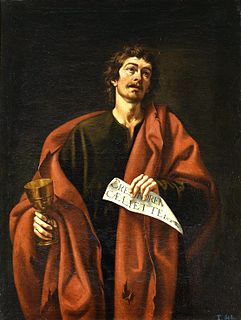
Cristóbal García Salmerón was a Spanish painter of the Baroque period.
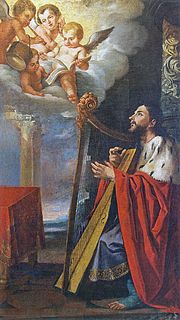
Pablo Pontons was a Spanish Baroque painter, believed to have been a student of Pedro de Orrente, whose style he promoted.
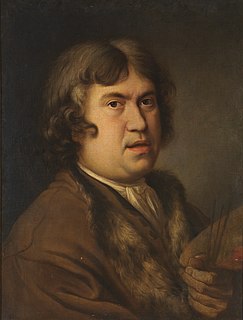
Francisco (Francesco) Leonardoni (1654–1711) was an Italian painter of the Baroque period, active mainly in Spain.

Andrés de Vargas (1613–1647) was a Spanish painter. He was born at Cuenca, and came to Madrid as a young man. He studied under Francisco Camilo. He painted religious works for the friaries as well as for private patrons of Madrid. He painted works for the cathedral and churches of Cuenca. He painted a series of frescoes in the Our Lady of the Sagrario by order of the Chapter of Cuenca. His style was called by Juan Agustín Ceán Bermúdez "feeble," and injurious to his art was Vargas' practice of regulating the quality of his pictures by their price.

Juan Conchillos Falco was a Spanish painter in the Baroque style.

Juan Antonio de Frías y Escalante was a Spanish Baroque Golden Age painter.
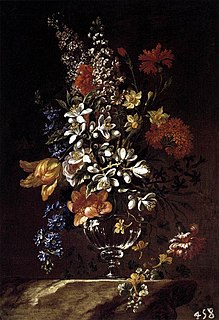
Francisco Pérez Sierra was a Neapolitan painter of Spanish origin. According to Antonio Palomino, he was the son of a Spanish general. He was a disciple of Aniello Falcone and Juan de Toledo. Numerous works that he painted included the Immaculate Conception, painted in 1655 in the convent of the Trinitarias de Madrid, Santa Ana conduciendo a la Virgen which is now at the Museo del Prado and Saint Joachim which is now at the Museo de Bellas Artes de Granada, he also painted Vase of Flowers in around 1690 which is now at the Royal Palace in Madrid.

Francisco Antolínez de Sarabia (1645–1700) was a historical and landscape painter who studied in the school of Murillo, whose style and manner of colouring he followed.
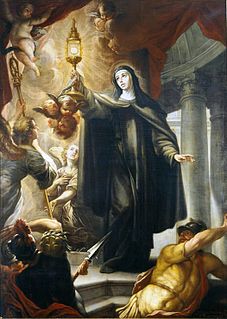
Isidoro Arredondo (1655-1702), an eminent Spanish painter, was born at Colmenar de Oreja, in 1653. He was first a scholar of José García Hidalgo, but he afterwards studied under Francisco Rizi. He painted history with much success, and on the death of Rizi, in 1685, he was appointed painter to Charles II of Spain. One of his principal works was a large picture of the 'Incarnation,' which Palomino mentions as a very grand composition along with Santa Clara (1693) and Santa Gertrudis. He painted much in oil and fresco in the churches and palaces, and the ' 'Legend of Cupid and Psyche,' in the royal palace, is considered one of his best works. He died at Madrid in 1702.
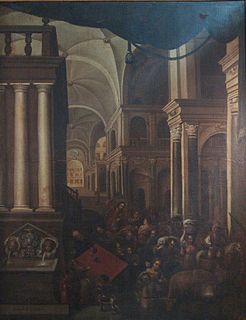
José de Cieza (1656–1692) was a Spanish painter.
Francisco del Plano y García de la Cueva was a Spanish painter who was active in Navarra and the Basque Country.
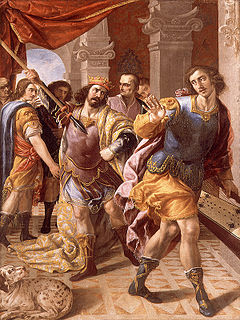
Francisco Fernández, who was born at Madrid in 1606, and brought up in the school of Vincenzo Carducho, was one of the most ingenious artists of his time, and his talent gained great reputation for him at an early age. He was employed by Philip IV in the palaces at Madrid, and in the convent of La Victoria are pictures by him of the Death of St. Francis of Paola, and St. Joachim and St. Anne. He also etched five spirited plates of allegories for Carducho's Dialogos de la Pintura, 1633. He was killed in a quarrel by Francisco de Baras in 1646.
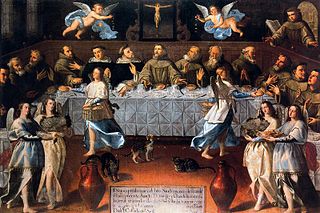
Felipe Gil de Mena, was a Spanish baroque painter.

Francisco de Solís, was a Spanish painter in the Baroque style. He also collected drawings and compiled biographies of other Spanish painters.
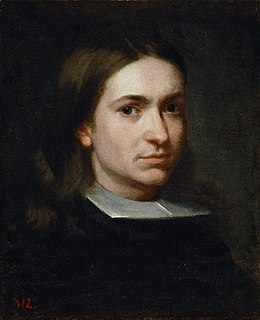
Sebastián Muñoz was a Spanish Baroque painter.
This page is based on this
Wikipedia article Text is available under the
CC BY-SA 4.0 license; additional terms may apply.
Images, videos and audio are available under their respective licenses.



















